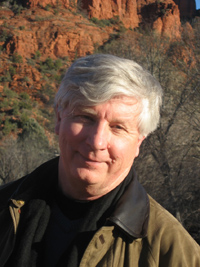On the Origins of Ecology
James B. Hunt details the development of John Muir’s environmental thought
In Restless Fires: Young John Muir’s Thousand-Mile Walk to the Gulf in 1867-68 historian James B. Hunt’s main focus is John Muir’s evolving thoughts on the origin of nature. Muir, a Scotsman, went on to become a tireless advocate for wilderness experience, a leader in the national-parks movement, and a founder of the Sierra Club, but prior to the period Hunt examines, his thinking about the relationship of humans to the rest of nature was not yet completely formed.
Muir was endowed with extraordinary energy and irrepressible intellectual curiosity. His father, a rigid fundamentalist, saw no use in reading or studying anything but the Bible, but John found stimulation in travel, first in emigrating from Scotland to Wisconsin as a boy and later in nature rambles throughout the upper Midwest. He managed to read Milton and Burns—and any other books he could borrow—despite the heavy labor of farm life and showed remarkable talent as an inventor. Muir’s real passion, however, was the study of nature. His original goal, after exploring the American South, was South America and Africa, but malaria cut short his southward progress at Havana and redirected his travels out of the tropics to California, where he made his home.
 Hunt traces the evolution of Muir’s thinking with each segment of his travels southward. Setting out September 1, 1867, from just north of Louisville, Muir found Kentucky easy. The people, both black and white, were friendly, and “the grandeur of its fields, hills, caves, and oaks,” was attractive. Tennessee was more challenging. The recent Civil War had left many people impoverished and suspicious: “Passed the rickety, filthy thrice-dead village of Jamestown,” he wrote in his journal. “[No] clump of huts in the darkest wild could be so repulsive.” Tennessee’s forests were clogged with brambles, the roads were terrible, and marauding brigands threatened his safety. But the lush gorges and river valleys with their incredible species diversity were stunningly beautiful. Muir had never seen real mountains before, and the east-Tennessee portion of his journal, Hunt writes, “bears witness to the beginnings of Muir’s transformation.” His writing became “more energetic and, indeed, spiritual.” Muir’s travels in Tennessee—and, later, Georgia—convinced him “that nature was characterized by balance and harmony” and that “one’s spiritual reverence for life and sense of the presence of God was found in nature more easily than in communities.”
Hunt traces the evolution of Muir’s thinking with each segment of his travels southward. Setting out September 1, 1867, from just north of Louisville, Muir found Kentucky easy. The people, both black and white, were friendly, and “the grandeur of its fields, hills, caves, and oaks,” was attractive. Tennessee was more challenging. The recent Civil War had left many people impoverished and suspicious: “Passed the rickety, filthy thrice-dead village of Jamestown,” he wrote in his journal. “[No] clump of huts in the darkest wild could be so repulsive.” Tennessee’s forests were clogged with brambles, the roads were terrible, and marauding brigands threatened his safety. But the lush gorges and river valleys with their incredible species diversity were stunningly beautiful. Muir had never seen real mountains before, and the east-Tennessee portion of his journal, Hunt writes, “bears witness to the beginnings of Muir’s transformation.” His writing became “more energetic and, indeed, spiritual.” Muir’s travels in Tennessee—and, later, Georgia—convinced him “that nature was characterized by balance and harmony” and that “one’s spiritual reverence for life and sense of the presence of God was found in nature more easily than in communities.”
By Florida, Hunt writes, Muir had fully shifted “from an anthropocentric view of nature that considered human beings to be the most significant entity in the universe to a Bio-centric view that considered all forms of life as having intrinsic value.” Indeed, he “thought more highly of alligators and bears than he did of some of the people and villages through which he passed.”
Restless Fires is an impressive piece of research, drawing on many sources to provide a valuable commentary on, and analysis of, John Muir’s journey, journals, and thought.
James Hunt will discuss Restless Fires: Young John Muir’s Thousand-Mile Walk to the Gulf in 1867-68 at Union Ave. Books in Knoxville on April 24 at 6 p.m.


